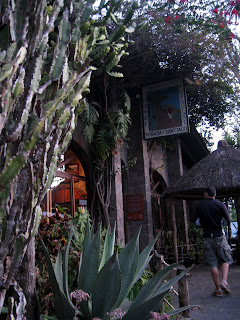The staff at all the clinics have been incredibly gracious and candid and even allowed me to take some photos and have access to data such as number of births and causes of infant mortality that are collected by the government.
The government runs a clinic that is free to all of the local people. Even though most women (I've heard about 90%) prefer to give birth at home, some chose to give birth at the clinic due to complications or nervousness. The clinic sees about 6-13 births a month but has no capacity for cesareans or anesthesia if complications occur. These cases are taken by ambulance to the town of Solola. Hospitalito, on the other hand does have the capacity to do surgery, provided there is a doctor visiting who can perform it but there is a charge for all services provided since it is private.
 The birthing "suite":
The birthing "suite":
Hospitalito Atitlán is currently housed in a former backpacker hostel because the old one was destroyed by a mudslide in 2005.

A new one is currently under construction. We checked out the site and even though it is still two years from completion, we can tell it will be a big upgrade from the current facilities!
We also caught a funeral on our walks between clinics. One of the women told us that in general, the local people are buried in a plot of land and then once their body has decomposed the bones are dug up so the plot can be used again. The bones are then piled neatly by a cross honoring the deceased person.
The main method of transport here, other than tuk tuk, is hopping onto the back of a pickup truck with rails to help you stand upright!

It hasn't been all work though! We joined some of the medical students and other volunteers from the clinic for appetizers and some dessert at Las Posadas one night:


 El ataque del corazon (the heart attack):
El ataque del corazon (the heart attack): Luckily, we survived!
Luckily, we survived!

And of course, the promised pictures of our wonderful casita!
 We can even see the Hospitalito from our balcony!
We can even see the Hospitalito from our balcony!


No comments:
Post a Comment